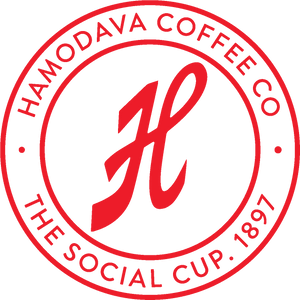
Our History, since 1897
By 1750, tea had become the national drink of England. It didn’t take long for tea to also become part of the way of life down under. There was money to be made in importing and selling tea and Commandant Herbert Booth, in command of The Salvation Army in Australia & New Zealand in the late 19th and early 20th century, saw the market as a means of financing the work of the Army, particularly its work overseas.

In 1897, Commandant Booth appointed fellow Salvationist, Adjutant Ashley Lamb, to enter the tea market as a fundraising enterprise. So successful was the venture that a warehouse was purchased in Westwood Place, Melbourne, where Lamb, began to blend his own distinctive product known as Hamodava Tea; Hamodava being a Singhalese word for army or ‘Army Tea’. The imported tea, mainly from larger suppliers in India and Ceylon, was cut, blended and packed with the Army’s own modern equipment. At the same time, in a foretaste of the Fair Trade concept, The Salvation Army purchased land in South Asia and arranged for indigenous farmers to buy the land in payment for their tea harvest. So successful was the blend that larger warehouses were acquired, with a building in Smythe’s Lane. Those who love to explore the brick lined laneways of Melbourne will still find hints of a faded Hamodava billboard.

Wooden tea crates of Hamodava packed and ready for shipping to customers 1898
Hamodava was a good product for The Salvation Army and a windfall for its overseas work. Community officers sold the tea as part of their regular fundraising activities and tea travellers and agents became established right across Australia and New Zealand. In 1900 with no depreciation whatever in the quality in order to benefit the Mission Fund, coffee and cocoa were added to the Hamodava family.
Ashley Lamb, in 1920, stated that if cups and saucers were filled with tea made from the output for one year they would make three lines totalling 6064 km in length. One row would reach from Melbourne to the Bluff in New Zealand, another right to Brisbane, Queensland, and the third to Albany, Western Australia.

Major Lamb (left) in the Hamodava tasting room 1898
Hamodava Tea, Coffee and Cocoa continued until 1930 when competition from other importers made the enterprise unviable. A world war and global financial crisis had driven consumers towards lower prices, and with that a comprise on quality. The Salvation Army was unwilling to follow suit. During its years in the 19th and 20th centuries Hamodava enabled The Salvation Army to maintain a commitment to providing Tea and Coffee lovers with a high quality drink, whilst also assisting local social work in communities throughout Australasia, and independence for farmers in southern Asia through its ethical practice.
Adapted from Articles written by Lindsay Cox, ‘Bundeburg’s Best & David Woodbury ‘Tea for Transformation’ as published in the Salvation Army Pipeline Magazine.

